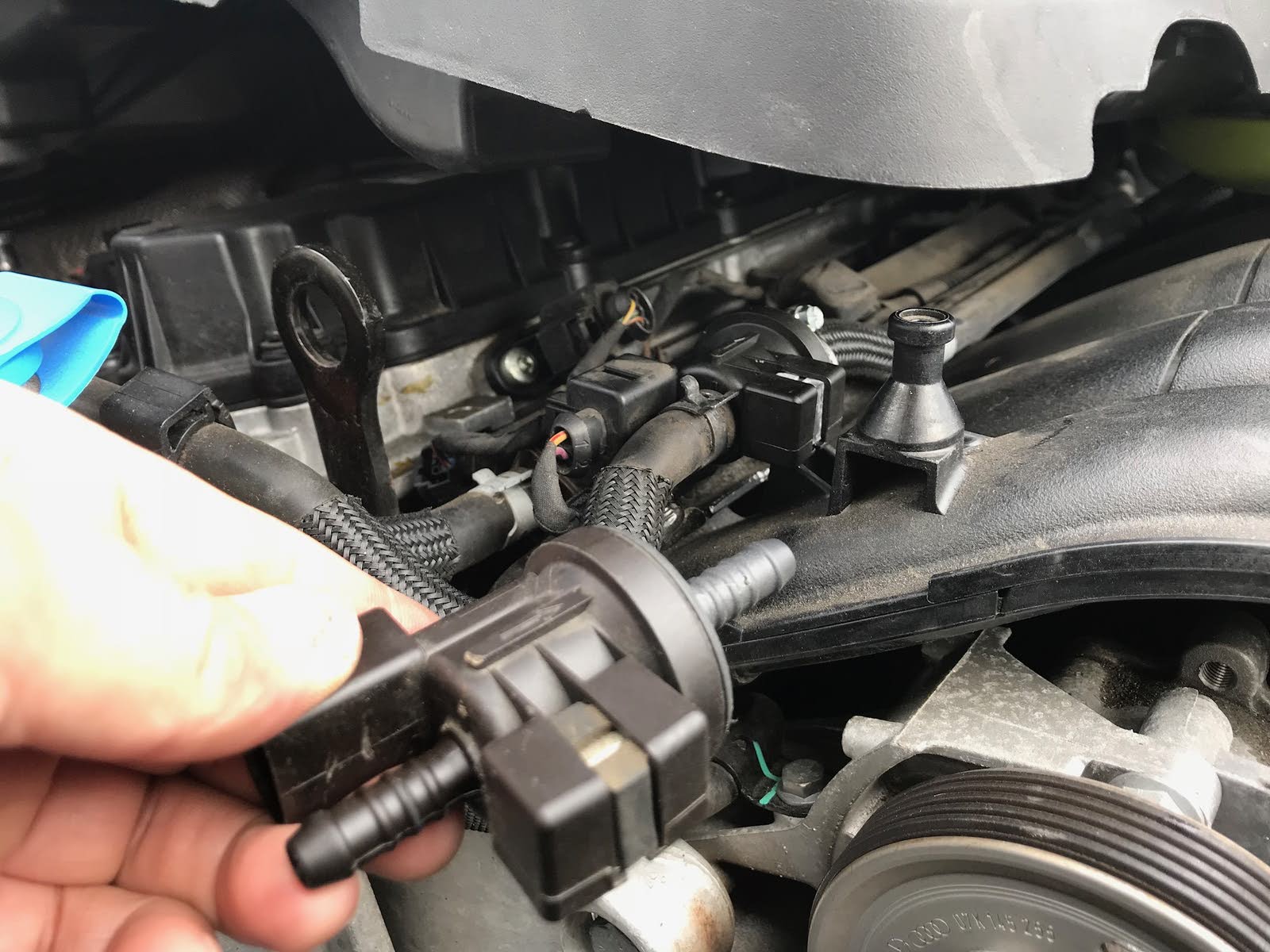Reduced engine power is a common problem that affects many Chevy Silverado owners, especially those with older models such as 2003, 2007, and 2009.
This issue can cause your vehicle to lose speed, performance, and fuel efficiency.
It can also pose a safety risk if it happens while you are driving.
But what causes reduced engine power in Chevy Silverado?
And how can you fix it?
In this article, we will explain the possible causes and solutions for reduced engine power in Chevy Silverado.
We will also cover some of the newer models, such as 2013, 2014, 2015, and 2016, and see if they have the same problem or not.
By the end of this article, you’ll know how to fix the reduced engine power in the Chevy Silverado and prevent it from happening again.
What does it mean when a Chevy Silverado says reduced engine power?
Reduced engine power is a warning feature that helps the driver understand the state of the engine. It usually means that there is a problem with the engine or its components that affects the vehicle’s performance and fuel efficiency.
What Causes Reduced Engine Power Chevy Silverado?
Reduced engine power in a Chevy Silverado can be caused by various issues. Common causes include:
-
Throttle Body Issues
The throttle body regulates the amount of air entering the engine. If it’s dirty or malfunctioning, it can affect the air-fuel mixture, leading to reduced engine power.
The TPS monitors the position of the throttle and sends signals to the engine control module (ECM). If it malfunctions, incorrect signals may be sent, causing reduced engine power.
-
Mass Airflow Sensor (MAF)
The MAF measures the amount of air entering the engine, helping the ECM determine the right fuel mixture. If it fails or gets dirty, inaccurate readings may lead to power loss.
-
Fuel System Issues
Problems with the fuel injectors, fuel pump, or fuel pressure regulator can impact the delivery of fuel to the engine, affecting its performance.
-
Electronic Control Module (ECM)
The ECM, or engine computer, controls various aspects of the engine’s operation. If it malfunctions or receives incorrect signals from sensors, it may limit engine power as a safety measure.
How To Fix Reduced Engine Power Chevy Silverado?
Fixing reduced engine power in a Chevy Silverado involves identifying and addressing the underlying issue. Here are general steps you can take, but keep in mind that the specific solution may depend on the cause:
- Check for Error Codes: Use an OBD-II scanner to retrieve any error codes stored in the vehicle’s computer. This can provide valuable information about the specific issue causing reduced engine power.
- Inspect Throttle Body: Clean the throttle body to remove any carbon buildup or debris. If it’s damaged, consider replacing it. Ensure that the throttle plate moves freely.
- Throttle Position Sensor (TPS): Test the TPS using a multimeter to ensure it’s functioning correctly. If it’s faulty, replace it. Check the wiring and connections as well.
- Mass Airflow Sensor (MAF): Clean the MAF sensor with a specialized cleaner. If cleaning doesn’t solve the issue, consider replacing the MAF sensor.
- Fuel System Check: Inspect the fuel injectors, fuel pump, and fuel pressure regulator. Clean or replace components as needed. Ensure there are no fuel leaks.
- Check for Vacuum Leaks: Inspect the vacuum lines for leaks, cracks, or disconnections. Repair or replace any damaged components.
- Inspect Wiring and Connections: Check the wiring harness and connectors for the sensors involved in engine control. Repair or replace damaged wires or connections.
- Reset ECM: Disconnect the battery for about 15 minutes to reset the ECM. Reconnect the battery and start the vehicle. This can sometimes clear temporary issues.
Tips On How To Prevent Reduced Engine Power Chevy Silverado?

Preventing reduced engine power in your Chevy Silverado involves regular maintenance and attentive driving habits. Here are some tips to help you keep your vehicle running smoothly:
- Regular Maintenance: Follow the manufacturer’s recommended maintenance schedule. This includes oil changes, air filter replacements, and scheduled inspections. Regular maintenance helps prevent issues that can lead to reduced engine power.
- Use Quality Fuel: Use high-quality fuel with the recommended octane rating. Poor-quality or low-octane fuel can lead to engine knocking and performance issues.
- Keep Throttle Body Clean: Periodically clean the throttle body to prevent carbon buildup. Use a throttle body cleaner and follow the manufacturer’s recommendations for cleaning.
- Replace Air Filters: Replace air filters at the recommended intervals. A clean air filter ensures proper airflow to the engine, preventing issues with the air-fuel mixture.
- Monitor Fluid Levels: Regularly check and maintain proper levels of engine oil, coolant, transmission fluid, and other essential fluids. Low fluid levels can lead to engine problems.
- Drive Responsibly: Avoid aggressive driving, sudden acceleration, and abrupt braking. Smooth driving habits reduce stress on the engine components and contribute to longevity.
- Address Warning Lights Promptly: If warning lights appear on the dashboard, especially the reduced engine power warning, address the issue promptly. Ignoring warning signs can lead to more significant problems.
- Check for Leaks: Regularly inspect the engine and under the vehicle for any signs of fluid leaks. Address leaks promptly to prevent damage to engine components.
- Inspect and Replace Sensors: Keep an eye on the health of sensors such as the throttle position sensor and mass airflow sensor. Replace any faulty sensors to maintain accurate engine control.
- Perform Regular Tune-Ups: Consider performing regular tune-ups, including spark plug replacements and ignition system checks, to ensure optimal engine performance.
How Do You Reset A Chevy Silverado?
To reset certain components or systems in a Chevy Silverado, you can follow these general steps. Keep in mind that the specific procedure may vary depending on the model year and features of your Silverado:
Battery Disconnect (ECM Reset)
- Turn off the vehicle and ensure all accessories are off.
- Disconnect the negative terminal of the vehicle’s battery.
- Wait for about 15 minutes to allow the electronic control module (ECM) to reset.
- Reconnect the negative terminal.
Throttle Body Relearn
- For drive-by-wire systems, start the engine and let it idle for a few minutes.
- Turn off the engine and wait for at least 30 seconds.
- Start the engine again and rev it a few times to ensure smooth acceleration.
Transmission Adaptation Reset
For automatic transmissions, you can perform a transmission adaptation reset by following these steps:
- Start the engine and allow it to reach normal operating temperature.
- Shift the transmission through each gear, holding each gear for a few seconds.
- Return the transmission to Park, turn off the engine, and wait for a minute.
Oil Life Reset
- If you’ve changed the engine oil, you may need to reset the oil life monitor. Check your owner’s manual for the specific procedure, but it often involves navigating through the vehicle settings on the instrument cluster.
Check Engine Light Reset
- After addressing the cause of a check engine light, you can reset it by using an OBD-II scanner or disconnecting the battery for a short period.
FAQs
How to clean the throttle body to fix reduced engine power on a Chevy Silverado?
To clean the throttle body, turn off the vehicle, open the hood, and locate the throttle body. Remove the air duct connector and spray a throttle body cleaner or use high-pressure air to remove any dirt or debris. Reassemble the parts and restart the vehicle.
How to replace the mass airflow sensor to fix the reduced engine power on the Chevy Silverado?
To replace the mass airflow sensor, turn off the vehicle, open the hood, and locate the sensor. It is usually attached to the air intake hose near the air filter box. Disconnect the electrical connector and remove the screws or clamps that hold the sensor. Install the new sensor and reconnect the connector.
How to check the cooling system to fix the reduced engine power on the Chevy Silverado?
To check the cooling system, turn off the vehicle and wait for the engine to cool down. Open the hood and check the coolant level in the reservoir. If it is low, add the proper coolant according to the manufacturer’s recommendation. Also, inspect the radiator, hoses, and clamps for any leaks or damage.
How To reset the powertrain control module to fix reduced engine power on Chevy Silverado?
To reset the powertrain control module, turn off the vehicle and disconnect the negative battery cable. Wait for 15 minutes and reconnect the cable. Turn on the vehicle and drive for a few miles to allow the module to relearn the settings.
How to test the pedal position sensor to fix reduced engine power on a Chevy Silverado?
To test the pedal position sensor, turn on the vehicle and connect an OBD-II scanner. Monitor the data from the sensor as you press and release the accelerator pedal. The sensor should show a smooth change in voltage or percentage as the pedal moves. If the sensor shows erratic or no change, it is faulty and needs to be replaced.
How to diagnose engine internal issues to fix reduced engine power on Chevy Silverado?
To diagnose engine internal issues, turn off the vehicle and open the hood. Check the oil level and condition using the dipstick. If the oil is low, dirty, or has metal particles, it indicates engine wear or damage. Also, check the exhaust for any smoke or unusual smell. If the exhaust is black, blue, or white, it indicates engine problems such as fuel injection, oil burning, or coolant leakage.
How to repair damaged wires to fix reduced engine power on a Chevy Silverado?
To repair damaged wires, turn off the vehicle and open the hood. Locate the wires that connect the sensors, the throttle body, and the powertrain control module. Inspect the wires for any cuts, corrosion, or loose connections. Use a multimeter to test the continuity and resistance of the wires. If the wires are broken or have high resistance, they need to be repaired or replaced.
How to clear the restricted fuel line to fix the reduced engine power on the Chevy Silverado?
To clear the restricted fuel line, turn off the vehicle and relieve the fuel pressure. Locate the fuel filter, which is usually under the vehicle near the fuel tank. Disconnect the fuel lines from the filter and replace the filter with a new one. Reconnect the fuel lines and turn on the vehicle.
How to prevent reduced engine power on Chevy Silverado?
To prevent reduced engine power on Chevy Silverado, follow the regular maintenance schedule for the vehicle. Change the oil and filter, replace the air filter, clean the throttle body, and check the coolant level and condition. Also, use the proper fuel type and quality recommended by the manufacturer.
Does reduced engine power affect the transmission of the Chevy Silverado?
Yes, reduced engine power can affect the transmission of the Chevy Silverado. The transmission may shift erratically or not at all, depending on the severity of the problem. The transmission may also enter a limp mode, which limits the gear selection and speed.
How to fix the limp mode on the Chevy Silverado?
To fix the limp mode on the Chevy Silverado, turn off the vehicle and wait for a few minutes. Turn on the vehicle and see if the limp mode is cleared. If not, use an OBD-II scanner to retrieve the diagnostic trouble codes and follow the appropriate repair procedure.
How to check the fuel pump to fix the reduced engine power on a Chevy Silverado?
To check the fuel pump, turn on the vehicle and listen for a humming noise from the fuel tank. If the noise is weak or absent, the fuel pump may be failing. Also, check the fuel pressure using a gauge. If the pressure is low or inconsistent, the fuel pump may be faulty.
How to check the fuel injectors to fix reduced engine power on a Chevy Silverado?
To check the fuel injectors, turn off the vehicle and open the hood. Locate the fuel injectors, which are attached to the fuel rail on the engine. Disconnect the electrical connectors and use a multimeter to test the resistance of the injectors. If the resistance is out of the specified range, the injectors may be clogged or damaged.
How to check the spark plugs to fix reduced engine power on a Chevy Silverado?
To check the spark plugs, turn off the vehicle and open the hood. Locate the spark plugs, which are connected to the ignition coils on the engine. Remove the spark plugs and inspect them for any signs of wear, damage, or fouling. Also, check the spark plug gap using a feeler gauge. If the spark plugs are worn, damaged, or have an incorrect gap, they need to be replaced.
How to check the oxygen sensors to fix reduced engine power on a Chevy Silverado?
To check the oxygen sensors, turn on the vehicle and connect an OBD-II scanner. Monitor the data from the sensors, which are located on the exhaust manifold and the catalytic converter. The sensors should show a fluctuating voltage or percentage as the engine runs. If the sensors show a fixed or no value, they may be faulty and need to be replaced.
How to check the catalytic converter to fix reduced engine power on a Chevy Silverado?
To check the catalytic converter, turn on the vehicle and connect an OBD-II scanner. Monitor the data from the oxygen sensors before and after the catalytic converter. The sensors should show a different value, indicating that the converter is working properly. If the sensors show a similar value, the converter may be clogged or damaged.
How to check the EGR valve to fix reduced engine power on a Chevy Silverado?
To check the EGR valve, turn off the vehicle and open the hood. Locate the EGR valve, which is usually on the intake manifold. Disconnect the vacuum hose and apply vacuum to the valve using a hand pump. The valve should open and close smoothly. If the valve is stuck or does not respond, it may be faulty and need to be replaced.
Conclusion
We hope this article has given you some insights into the causes and solutions for reduced engine power in Chevy Silverado.
If you have any questions or comments, please feel free to leave them below.
Thank you for reading!




